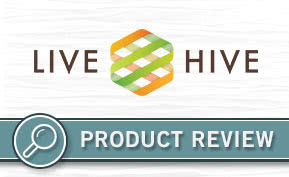Sales Tools
Insight Selling: How Microsoft & SAP do it better

With the rise of the empowered buyer, it is no wonder that the Microsoft, and SAP have embraced insight selling. But these companies have also learned that there is a gap between theory and the practical application, because insight selling is more than just using data, facts, and brilliance to shock and awe buyers about the error of their ways.
These companies have discovered that how their sales force delivers insight will determine if they are perceived as provocative or arrogant, and more importantly, if their insight is successful at reframing the buying vision. We believe that the best way to deliver insight is to wrap the insight inside an insight scenario-a unique form of business storytelling.
It would appear that these top software companies agree as SAP and Microsoft, for instance, have hired Chief Storytellers. But don’t take their word for it. Let’s do a insight selling thought experiment, so that you can discover for yourself which is more likely to inspire you to act: selling delivered by facts and figures or as an insight selling scenario.
Insight Selling scenario
Imagine you are the VP of Sales for Software USA. After an overnight flight, you are walking over the Waterloo Bridge in London on a sunny April morning. You are on your way to the biggest interview of your life- to run your European operations.
After investing over $1,000 on a new wardrobe for this very important interview, you sidestep a puddle, to avoid getting your new shoes wet. Just then, out of the corner of your eye, you see a small girl fall off the bridge into the frigid water below. As she cries for help, without thinking, you jump in to rescue her.
As you emerge from the river, you notice that your suit and shoes are ruined. But that’s quickly forgotten, when you look down into the frightened girl’s eyes, and realize that she is just about the same age as your daughter.
Facts & figures scenario
The next day, after a successful but wet interview, you are flipping through the Economist magazine in the hotel bar. As you finish your drink, you notice an advertisement for relief victims of the Indonesian Tsunami. For a fraction of the cost of your ruined wardrobe, you are informed how your contribution could save hundreds of people. There are plenty of facts and figures about airlifts of medicine, medical supplies, and water purification. But the facts do not grab you, and you are quickly flooded with too much information. You disengage, look at your watch, and decide it is time to leave for the airport.
Concrete stories trump abstract facts
If you are like most people, one personalized story about a girl on a bridge has infinitely more impact than the impersonalized generalization in The Economist, even if the impact of the generalization is 100 times greater. Studies have shown that charities sending out donation letters, for example, pull twice the donations when the letter is about one person as opposed to the presentation of facts and figures about many. Humans are wired to share insight scenarios. Stories are how we take a scenario out for a virtual test drive without having to risk the time or the danger to do it ourselves.
So if your salespeople shared just one story per meeting, and did everything else the same, would customers relate more to what your people are selling? Would you sell more?
Want more on building customer relationships? Download Business-Software.com’s Top 40 CRM software report to compare features and pricing of the best customer relationship software. For more reading material, visit the CRM resource page.






